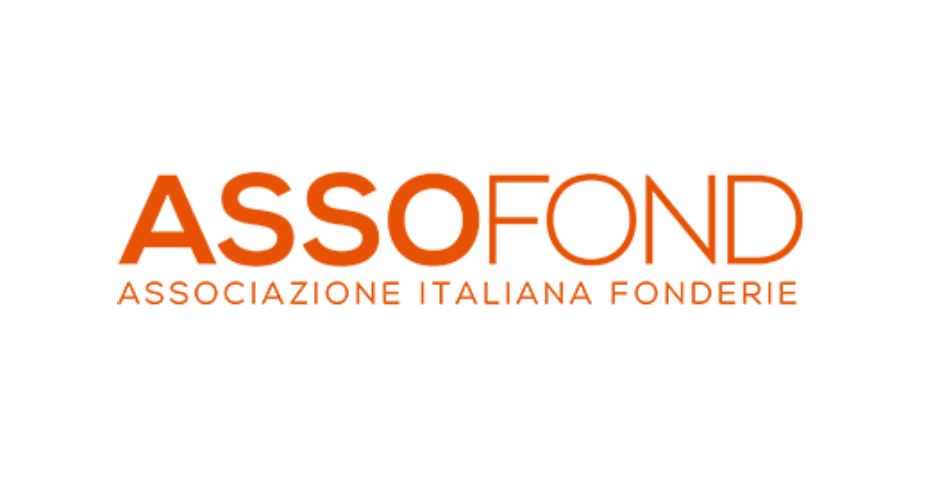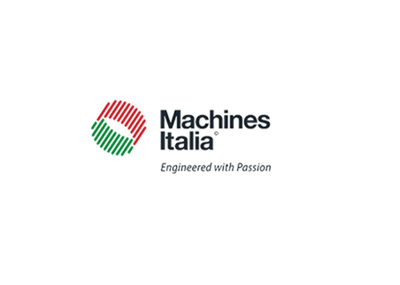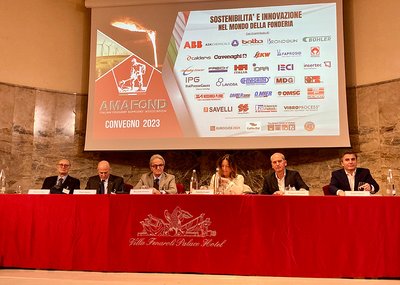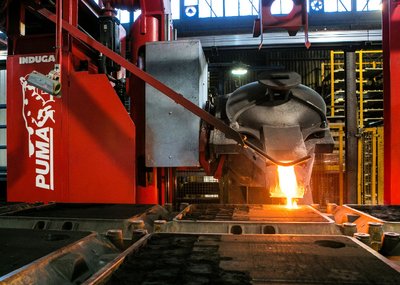Production declines in the second quarter (-5.9% compared to the same month last year). Zanardi: “The agreement with Trump may reduce uncertainty , but Europe must act now to boost production.”
According to the Assofond association, the Italian foundry industry is still in turbulent waters. Despite a slight economic recovery (+1.3% compared to the previous quarter), the second quarter of 2025 closed with a 5.9% decline in production compared to the same period in 2024.
Sales also followed a similar trend to production, with a loss of -6.7% compared to the second quarter of 2024: in this case too, the weak economic upturn (+1.6% compared to the previous quarter) was unable to reverse the trend.
This is the picture outlined in the latest report by the study center of Assofond, the Confindustria association representing the sector.
“The data from our latest survey confirm the structural difficultiesthat we have been observing since the second half of 2023,” comments Assofond President Fabio Zanardi, continuing: “The first half of the year closes with a negative balance after the poor results of 2024. The economic and trend developments suggest that we have reached a bottom from which we can only rise, but everything is being called into question by the possible further weakening of customer markets due to the application of US tariffs.”
The question of competitiveness is up for debate – EU tariff agreement with the US casts more shadows than light
The agreement on tariffs announced between the European Union and the United States “cannot be good news, although it is a potentially better scenario than an uncontrolled escalation,” Zanardi emphasizes. "There are still many points to be clarified. The hope is that it will at least reduce the crippling uncertainty that has blocked investment in recent months, but Europe's problems are currently mainly internal. The so-called internal obligations," Zanardi continues.
Assofond warns about the situation of the European economy: "In a world of protectionism, we Europeans are the ones who suffer the most, as we operate in one of the most open markets in the world and have an alarming competitiveness deficit compared to international competitors. US tariffs could divert large quantities of products from the Far East to Europe and put new and unsustainable pressure on our market. To address this risk, it is necessary to revitalize the competitiveness of Italian and European industry: It is necessary to reduce energy costs, eco-taxes, bureaucracy, and labor costs and protect those who invest in decarbonization. We have already presented our proposals: decoupling electricity prices from gas prices, abolishing wage increases provided for in national contracts, extending the scope of the CBAM to finished products that are currently not covered by the measure and whose absence exposes us to unfair competition from those who produce in countries where there are no environmental regulations; Labor costs are very low and safety standards are often non-existent. The Italian government and the European Commission know what companies need: now they must act quickly."
Production and sales: development by sector
The slight cyclical growth in production that characterized the second quarter of 2025 (+1.3% compared to the previous quarter) slowed significantly compared to previous months: In the January-March period, growth was still +7.1% compared to the last quarter of 2024.
Ferrous metal foundries recorded an increase of +1.7%, while growth in the non-ferrous metals sector was almost zero (+0.1%). The sample is dominated by foundries that have slightly increased their production levels (38.9%), followed by 33.3% that have suffered a decline and the remaining 27.8% that report no significant change compared to the previous quarter.
The quarterly change in turnover in the second quarter was positive (+1.6%), driven by iron foundries (+2.7%), while non-iron foundries recorded a decline (-1.2%). 50% of the companies surveyed reported an increase in turnover compared to the first quarter; 27.8% indicate a decline, while in 22.2% of cases it remains unchanged.
Confidence and order transparency
The assessment of order visibility remains at a very low level. Average visibility is less than two months for iron foundries and slightly higher for non-iron metal foundries. Although the situation remains very uncertain, both the general mood regarding the reference period improved, with the Act Index reaching 55 points in June, and companies' expectations for the next six months, with the Six Index returning above the sufficiency threshold (56 points).
Recruitment and selection: a constant challenge
Despite the difficult market dynamics, foundries also confirmed their recruitment efforts in the first half of 2025. 83.3% of companies initiated a selection process in the first half of the year. The most sought-after are skilled workers (57.8% of cases), followed by general laborers (31.1%). Despite their commitment to research, however, 80% of the foundries surveyed say they are only partially satisfied with the selection they have made. 16.7% of the sample are completely satisfied, while 3.3% are completely dissatisfied. This highlights the ongoing difficulties in finding skilled workers and the importance of investing in training and talent acquisition for the sector.












